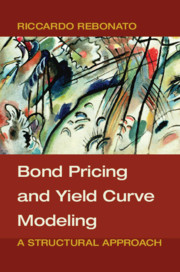Book contents
- Frontmatter
- Dedication
- Contents
- Acknowledgements
- Symbols and Abbreviations
- Part I The Foundations
- Part II The Building Blocks: A First Look
- Part III The Conditions of No-Arbitrage
- Part IV Solving the Models
- Part V The Value of Convexity
- Part VI Excess Returns
- 23 Excess Returns: Setting the Scene
- 24 Risk Premia, the Market Price of Risk and Expected Excess Returns
- 25 Excess Returns: Empirical Results
- 26 Excess Returns: The Recent Literature – I
- 27 Excess Returns: The Recent Literature – II
- 28 Why Is the Slope a Good Predictor?
- 29 The Spanning Problem Revisited
- Part VII What the Models Tell Us
- References
- Index
27 - Excess Returns: The Recent Literature – II
from Part VI - Excess Returns
Published online by Cambridge University Press: 25 May 2018
- Frontmatter
- Dedication
- Contents
- Acknowledgements
- Symbols and Abbreviations
- Part I The Foundations
- Part II The Building Blocks: A First Look
- Part III The Conditions of No-Arbitrage
- Part IV Solving the Models
- Part V The Value of Convexity
- Part VI Excess Returns
- 23 Excess Returns: Setting the Scene
- 24 Risk Premia, the Market Price of Risk and Expected Excess Returns
- 25 Excess Returns: Empirical Results
- 26 Excess Returns: The Recent Literature – I
- 27 Excess Returns: The Recent Literature – II
- 28 Why Is the Slope a Good Predictor?
- 29 The Spanning Problem Revisited
- Part VII What the Models Tell Us
- References
- Index
Summary
I hope that [my] accounts of other people's work will be accurate, but they will assuredly be selective.
Bernard WilliamsLet me only say that what econometrics – aided by electronic computers – can do, is only to push forward by leaps and bounds the line of demarcation from where we have to rely on our intuition and sense of smell.
Ragnar Frish, Nobel Prize Lecture, June 1970THE PURPOSE OF THIS CHAPTER
We have presented in detail in the previous chapter the results on the tent-shaped bond-return-predicting factor obtained by Cochrane and Piazzesi (2005). We have also discussed their robustness and the extent to which the tent factor is equivalent to other return-predicting factors. We did so in some detail because the Cochrane-Piazzesi tent has achieved a benchmark status in predictive regressions of bond risk premia.
A lot of very interesting work has been produced in the wake of the paper by Cochrane and Piazzesi (2005). We present the results of three interesting papers in this by-now-crowded field because of their complementary aims: the first (Radwanski, 2010) tries to give an economic interpretation to the tent; the second (Ludvigson and Ng, 2009) shows what yield-curve–based returnpredicting factors are, by design, forced to miss; the third (Cieslak and Povala, 2010a, 2010b) explain why tents, slopes and bats look as they do, what they miss, and what else is required to obtained the best prediction of risk premia.We provide a simple reinterpretation of the results of Cieslak and Povala (2010a, 2010b) that has helped us, and hopefully will help the reader, understand how their return-predicting factor is constructed, and why it works so well.
We will also try to answer an outstanding question: why should it be the case that principal components as high as the fifth should be necessary for predicting bond returns, when conventional wisdom suggests that three components do an extremely good job at explaining the yield curve?
Apart from the intrinsic interest, the chapter is very important because of the implications it has for affine modelling. These implications are spelled out in Sections 27.4 and 27.5, in Chapter 29, and in the rest of the book.
- Type
- Chapter
- Information
- Bond Pricing and Yield Curve ModelingA Structural Approach, pp. 497 - 526Publisher: Cambridge University PressPrint publication year: 2018



